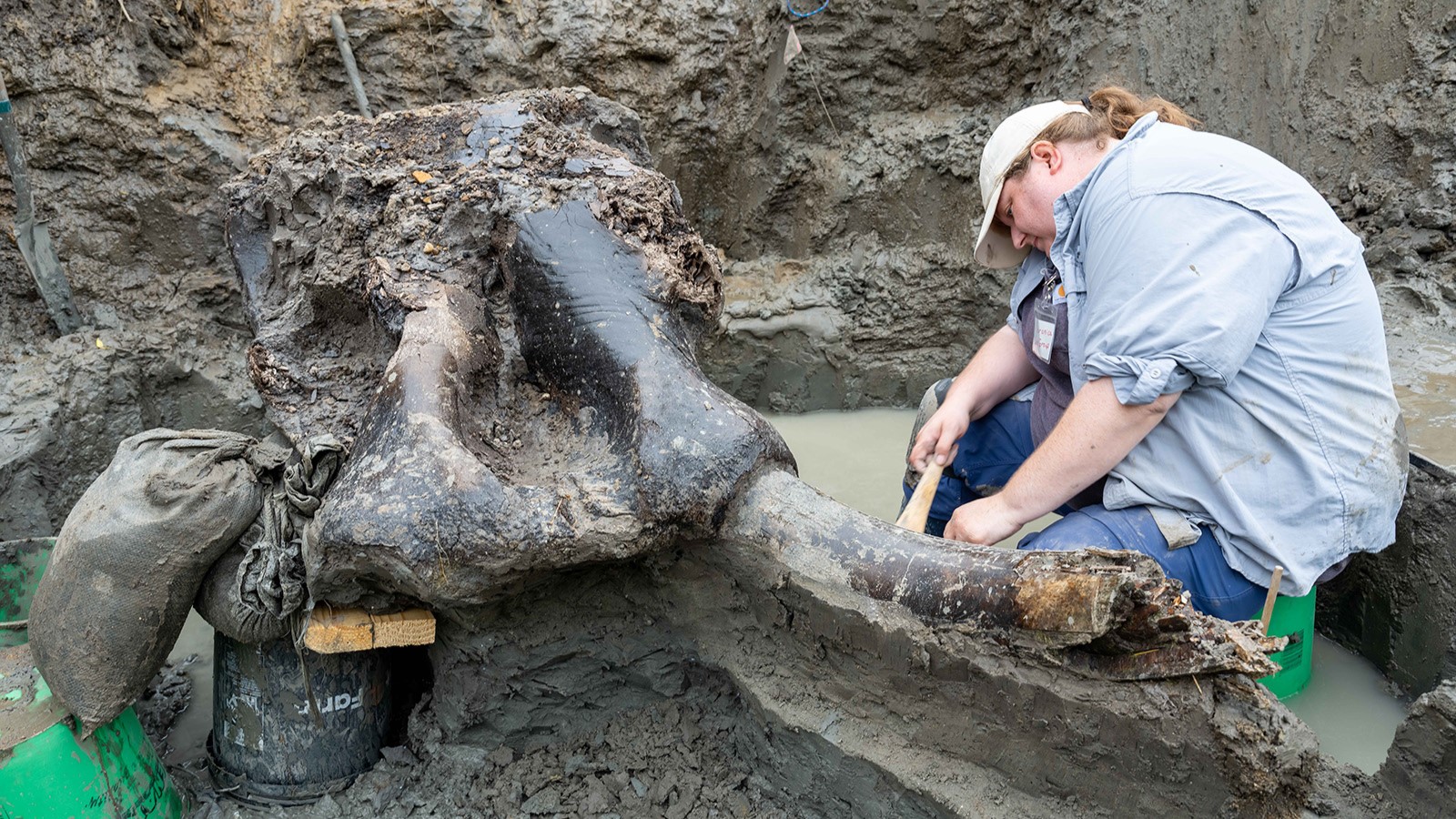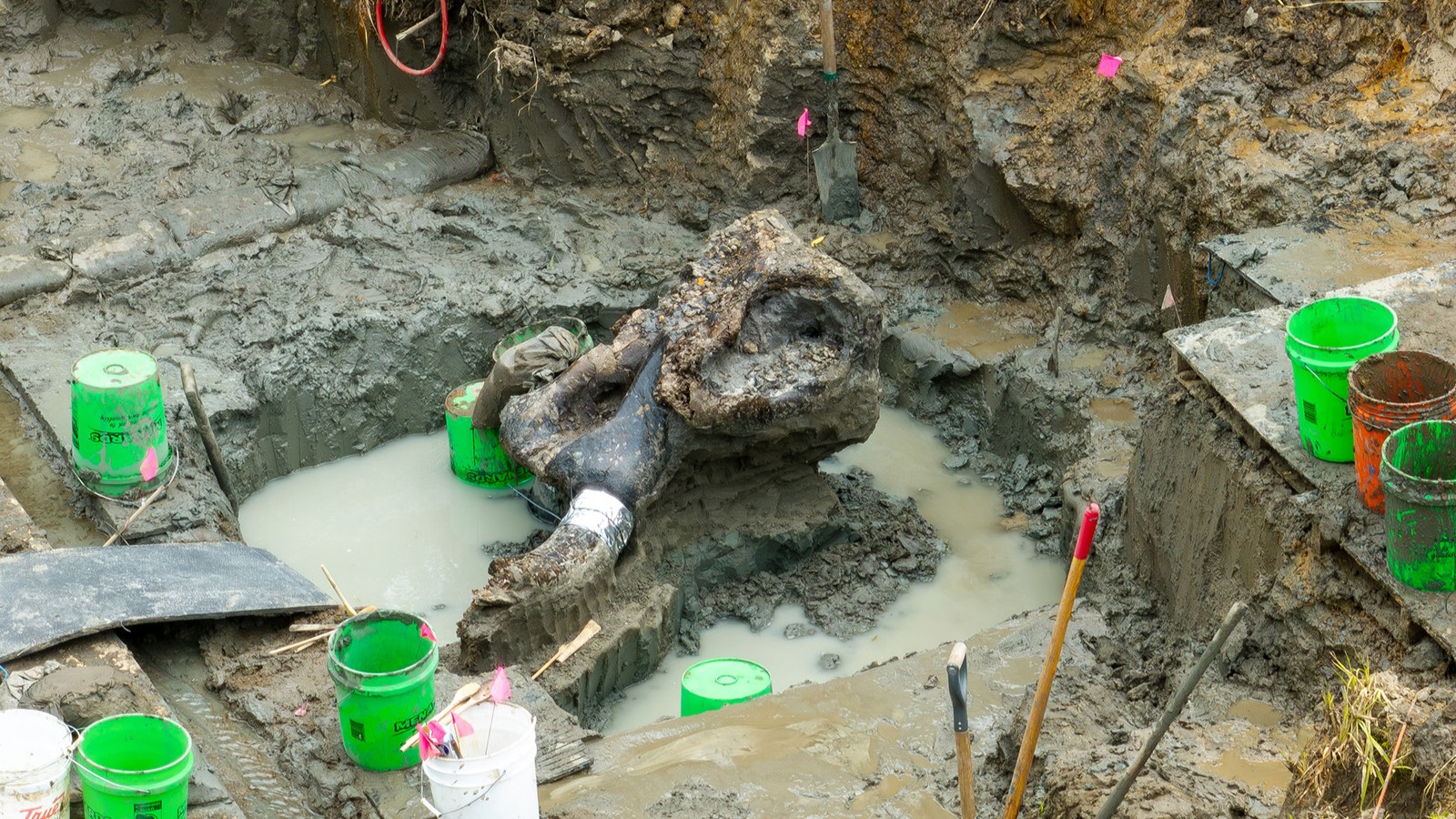
Researchers have unearthed a well-preserved, roughly 13,600-year-old mastodon skull from a creek in Iowa — the first ever found in the state.
The discovery comes two years after residents of Wayne County, in the south of the state, reported finding an extremely long bone protruding from the creek. At the time, archaeologists examined the bone and identified it as a mastodon femur. This spiked their interest and led them to further excavate the site in the hopes of discovering more of the animal.
Now, scientists have revealed the site holds a huge skull with a tusk still attached and other bones likely belonging to the same prehistoric animal. Researchers are still working to determine if the mastodon died at the hands of humans, or if humans interfered in any way with the carcass.
"We're really hoping to find evidence of human interaction with this creature — perhaps the projectile points and knives that were used to kill the animal and do initial butchering," John Doershuk, director and state archaeologist at the University of Iowa Office of the State Archaeologist who participated in the excavations, said in a statement.
Related: Huge mammoth tusk discovered sticking out of Mississippi streambed
American mastodons (Mammut americanum) were large, now-extinct mammals related to elephants and mammoths. They were widespread across North America from what is now Alaska to central Mexico between 3.5 million and 13,000 years ago. They went extinct shortly before the end of the last ice age around 11,700 years ago as a result of the warming climate and human predation, according to the San Diego Natural History Museum. Mastodons were smaller than woolly mammoths (Mammuthus primigenius), weighing around 6 tons (5.5 metric tons).

Researchers used radiocarbon dating to pinpoint the age of the mastodon skull. Their results indicate that the animal lived at the same time as some of the first Americans who occupied the area, raising the possibility that the beast may have interacted with humans.
The researchers discovered human-made artifacts at the creek site that bolster this hypothesis, including stone tools, according to the statement. Although the tools are a few thousand years younger than the mastodon skull, the find confirms for the first time that humans occupied the creek.
"There's also potential evidence on the bones themselves," Doershuk said, adding that "there could be identifiable cut marks."
Further research is underway to determine whether humans might have deposited the mastodon bones in this creek. Archaeologists will then hand the remains to the Prairie Trails Museum in Corydon, Iowa, for a new exhibit, according to the statement.







